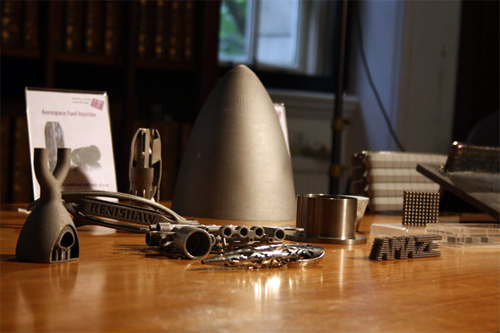The European Space Agency is heading a project to make 3D printing using metals more viable. Using a tactic appropriately similar to the cliché of “reaching for the stars”, the agency has a long-term target of “printing” a satellite as a single-part object.
The ESA showed off some of the existing technology at the Science Museum in London this week. It’s part of the Amaze project, which stands (sort of) for Additive Manufacturing Aiming Towards Zero Waste & Efficient Production of High-Tech Metal Products and brings together 28 organizations from universities and industry. The exhibition will be open to the public until July 2014.
3D printing of metals follows the same basic process as existing printers that use plastics: computer designs are used to “print” an object layer by layer. A laser beam first etches a cross-section into a layer of powdered metal, then heats and solidifies the entire metal. It’s also possible to create multiple parts that securely interlock.
Among the components demonstrated were parts made of a tungsten alloy which can hold its shape and structure up to 3,000 degrees Celsius, meaning they could survive on a rocket nozzle. As many of the parts would be a single component with no bolts or welding, they should be much stronger.
It’s not just space travel that could benefit from such techniques. The combination of lightness and strength makes 3D printed metals particularly useful for aircraft by reducing fuel requirements. It could even be used to make casings for a nuclear fusion reactor.
The ESA is also stressing the environmental benefits of metal printing. Because there’s no need to manufacture components and then cut them down to size, there should be less or even no waste.
The idea of the Amaze project is to collaborate on ways to reduce or eliminate the problems with 3D printing such as surfaces not being perfectly smooth and some parts having air bubbles inside.

